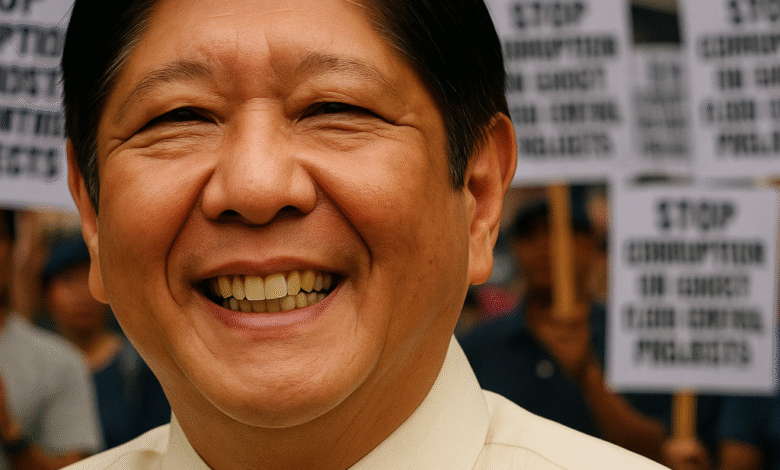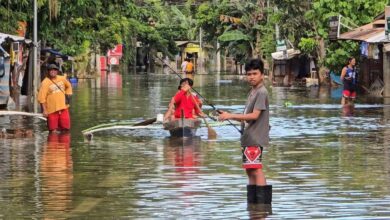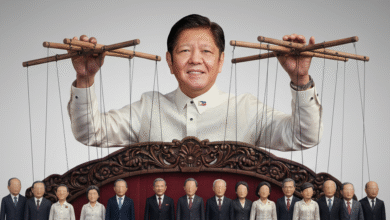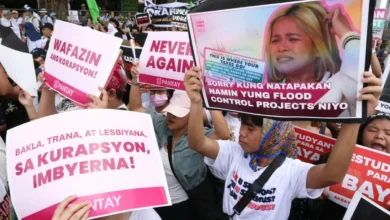
Marcos Wins: Filipinos Remain Divided
September 21, a date seared into our collective memory. In 1972, it marked the night when Martial Law was declared, and the country was thrown into two decades of plunder, silence, and fear. Yesterday, it was tested once again, as thousands spilled into the streets of Manila and across the archipelago, hoping to resurrect its meaning.
Instead, the day revealed something darker. It was not the state’s iron fist that humiliated the rallies, but the opposition’s inability to become whole. The anger was real, the frustration undeniable. But Marcos wins—not because he is loved, nor even feared, but because Filipinos remain divided.
The numbers told part of the story. In Manila, the turnout was modest. This was a far cry from the EDSA of 1986, nor even the “Pink Wave” of 2022, when Robredo’s rallies briefly made it seem possible to summon a people’s tide. For a city of millions, where every street corner carries the ghost of uprisings past, yesterday’s gatherings looked small. Barricades theatrically covered up the mansions of Martin Romualdez and Zaldy Co, but the crowds never came close. The oligarchs’ gates did not rattle. Their glass windows did not even glimmer with worry.
Beyond the capital, fragments emerged: a youth contingent in Baguio with handmade signs; a small march in Cagayan de Oro; in Davao, a stranger scene—Duterte loyalists staging their own show of force, while niche groups, including punk rockers, seized a microphone to spit their anger at corruption and betrayal. For a fleeting moment, Davao became a theater of contradictions: the Duterte cohort posturing, while young misfits shouted their truth.
But the protests, however scattered, were not united by a singular call. There was no clear, actionable demand or objective. Civil society groups, NGOs, church leaders, campus activists, and ordinary workers all walked, but they did not walk in step. Some muttered about coups, others dreamed of storming Malacañang, while moderates clung to the symbolism of People Power. What bound them together was frustration, and frustration alone. Without coherence, a chorus becomes noise.
That dissonance was sharpest at EDSA, where middle-class marchers, socialites, and celebrities mingled with politicians. Senators Aquino and Pangilinan, incumbent and retired lawmakers and LGU officials, even Chavit Singson—various faces of the political class—were spotted. For some, their presence lent credibility. For others, it was proof that this was never a people’s movement, only another stage for the same tired actors. On the ground and online, anger at these appearances boiled. The message was clear: the elite cannot lead a revolt against itself.
Then came the pettiness. On social media, a young woman was shamed for her exposed armpits; photojournalist Ezra Acayan was criticized for his coverage of Mendiola; internet personalities James Caraan, Jack Argota, and Viy Cortez became lightning rods for ridicule. Attempts at humorous content mocked the poor, most notably a man who demanded lower prices for street food. The conversations turned inward, trivial, ugly. Worst of all, there are reports of a young man being shot and killed last night, underreported by mainstream media, if at all. “He deserved it,” commented some netizens.
Meanwhile, Visayan and Mindanao voices bristled at Manila’s pretensions. They saw their heroes—the Dutertes—mocked, and they rejected the rallies’ colors as alien. What was framed as national resistance was, once again, a Manila drama performed for itself.
History should have been the rallying point. Instead, it was the great absence. September 21 could have tethered the present to the tyranny of the past, but the movements failed to summon that power. The old spirits of unity never appeared. The chants were scattered (a netizen even commented: “the chants here at EDSA do not slap”), the banners inconsistent, the stage speeches drowned by bickering. And so the anniversary, once sacred, became ordinary—another day in the endless cycle of protest without consequence.
It is tempting to celebrate the slivers of sincerity. The students who marched despite their fear. The handful of workers who may have stepped out of their bus rides home to join the crowd, getting back to their families just a little bit later than usual. These gestures matter, and they deserve respect. But bravery without direction is charity to the oppressor. Each splinter group carries its torch, but the torches do not converge. They burn alone, and risk being swallowed by the darkness.
For Malacañang, this was not a threat but a blessing. No significant police reaction was needed. The regime only had to watch as the opposition dissolved into its own contradictions. The powers that be know the lesson well: a divided people is a defeated people. The barricades at Romualdez’s mansion will be taken down soon, and so will the tarps at Zaldy Co’s, to give way to aesthetic. Kings and queens must be surrounded by beauty, not ugliness. Imelda taught us that.
And so Marcos wins. He does not win with the force of conviction, nor even the legitimacy of numbers. He wins by presiding over a country that cannot agree on the face of its enemy. He wins because, while one camp shouts at corruption, another dreams of coups, another posts memes, and another defends the dynasty of the South, while he simply waits. And in that waiting, he grows stronger.
The darkness is not the absence of protest. It is the failure of protest to transcend itself. Yesterday was proof. The rallies were not crushed; they collapsed under their own divisions.
There is a sliver of light—there always is. That people still come to EDSA, their voices in unison, and that they still risk life and limb. It still matters. But light without coherence cannot blind the enemy. And the enemy, today, does not tremble. He smiles. He grins. Because he knows the truth written into our history: no divided force has ever toppled the powers of these islands.
Until we march as one, the mansions will stand, the Palace will gleam, and the darkness will endure.




